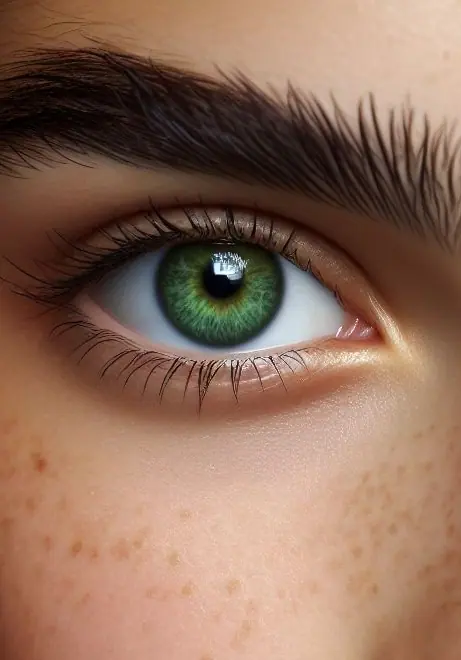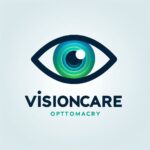What you should know about
Common Eye Disorders and Diseases
What are they called?
- Near-sighted, far-sighted, astigmatism
- Refractive Errors
- Loss of central vision
- Cataract
- Glaucoma
- Age-Related Macular Degeneration
- Diabetic Retinopathy
- Poor vision in one eye or lazy eye
- Amblyopia
- Imbalance in eye positioning
- Strabismus

Refractive Errors
Refractive errors in eyesight refer to a common ocular condition characterized by a deviation in the focusing ability of the eye, leading to impaired visual acuity. This phenomenon arises due to an imbalance in the refractive power of the eye and its axial length, resulting in a mismatch between the incoming light rays and their convergence on the retina. The most prevalent types of refractive errors include myopia, hyperopia, astigmatism, and presbyopia, each manifesting unique optical properties that disrupt the normal process of image formation on the retina.
Myopia, or nearsightedness, occurs when light rays converge before reaching the retina, causing distant objects to appear blurry. On the other hand, hyperopia, known as farsightedness, results from light converging behind the retina, leading to difficulties in focusing on nearby objects. Astigmatism is characterized by an irregular curvature of the cornea or lens, causing distorted vision at all distances. Furthermore, presbyopia refers to age-related changes in the eye’s lens elasticity, affecting near vision due to reduced accommodation ability. Understanding these refractive errors is crucial for optometrists and ophthalmologists to provide accurate diagnoses and prescribe appropriate corrective measures such as eyeglasses, contact lenses, or refractive surgeries to enhance visual clarity and quality of life for affected individuals.
Our Myopia Control Clinic in Chandler, Arizona has solutions to arrest the progression of nearsightedness in children and teens. With over 15 years of experience we can make a difference in your child’s life.
Loss of Central Vision
Certainly. Conditions that lead to the loss of central vision often affect the macula, a small but crucial region within the retina responsible for sharp and detailed visual acuity. The disruption in this central visual field can be attributed to various pathological mechanisms, such as age-related macular degeneration (AMD), diabetic retinopathy, and macular edema. These conditions typically manifest as a gradual deterioration in the ability to discern fine details, read small print, and perceive objects directly in front of the individual.
The etiology of these eye conditions involves complex interplay among genetic predisposition, environmental factors, and vascular abnormalities that compromise the blood supply to the macula. Furthermore, inflammatory processes and oxidative stress contribute to cellular damage within the retinal layers, leading to functional impairment in central vision. Understanding the pathophysiological underpinnings of these conditions is essential for developing targeted therapeutic interventions aimed at preserving or enhancing visual function in affected individuals. Overall, a comprehensive approach integrating clinical assessment with advanced imaging modalities is imperative for managing patients with central vision loss due to underlying ocular pathology.
Lazy Eye
Amblyopia, colloquially known as lazy eye, is a neurodevelopmental disorder characterized by decreased visual acuity in one or both eyes despite the absence of any structural abnormalities. This condition typically arises during early childhood, when the visual system is still in a critical period of development and plasticity. The etiology of amblyopia involves disrupted binocular interactions and abnormal visual processing pathways, leading to a significant reduction in the neural response to visual stimuli from the affected eye. As a result, individuals with amblyopia often experience blurred or diminished vision in the affected eye, which can impact their overall visual perceptual abilities and depth perception.
The management of amblyopia primarily revolves around occlusion therapy, optical correction, and vision training exercises aimed at stimulating the underdeveloped visual pathways and promoting binocular vision. These interventions are designed to strengthen the connection between the brain and the affected eye, ultimately improving visual acuity and restoring functional vision. However, successful treatment outcomes largely depend on early detection and timely intervention, as amblyopia becomes more challenging to treat beyond a certain age due to reduced neuroplasticity in the visual system. Therefore, raising awareness about the importance of routine eye screenings in children and implementing evidence-based interventions are crucial steps towards effectively addressing amblyopia and optimizing visual outcomes for individuals affected by this intricate neurovisual condition.
Imbalanced Eye Position
Strabismus, a condition also colloquially known as crossed eyes, pertains to a visual anomaly characterized by the misalignment of the eyes. This ocular disorder undermines the harmonious coordination of the extraocular muscles responsible for directing eye movements, resulting in one or both eyes deviating from their normal axis. Such maladjustment engenders a disparity in the fixation point of each eye, thereby impeding binocular vision and leading to potential issues with depth perception.
From a physiological standpoint, strabismus can be attributed to an array of factors encompassing genetic predisposition, neurological abnormalities, or muscular dysfunction. The intricacies of ocular anatomy and neural pathways are integral in deciphering the etiology of this visual impairment. Furthermore, the manifestation of strabismus may vary across different age groups and can have ramifications on cognitive development and social interactions. As such, early detection and intervention are paramount in addressing this ocular malady and mitigating its impact on an individual’s quality of life.
